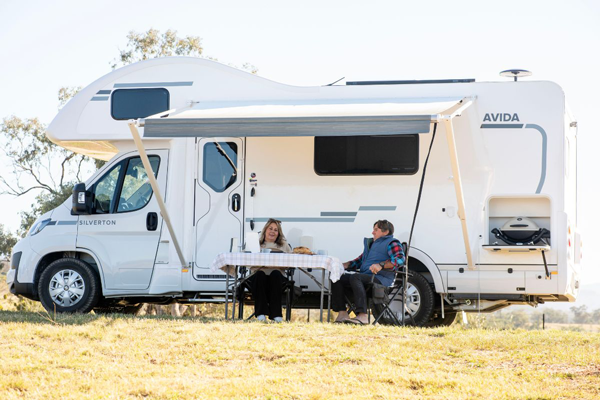

Apart from adding to the driver’s legal responsibilities, towing a trailer, caravan or towed vehicle of any discipline requires a greater degree of knowledge and skill. All towed items including trailers, caravans, camper trailers, 5th wheelers, boats, tent trailers and towed vehicles effect the performance of the towing vehicle. They effect fuel consumption, acceleration, braking ability, general control and manoeuvrability.
These effects worsen as the size and weight of the towed item increase relative to that of the towing vehicle. The extra length and width can be hard to manage, with wind, road conditions and passing vehicles having a greater effect than on the vehicle alone. This places additional responsibilities on the driver.
When towing you should:
- Be aware that towing is more stressful than normal driving and is more likely to cause fatigue. Therefore, more rest stops should be planned.
- Allow for the extra length and width of the caravan or tow vehicle when entering traffic.
- Avoid sudden lane changes and changes of direction.
- Ensure that you do not have people riding in the caravan or towed vehicle. This is not permitted by law.
- When travelling downhill engage a lower gear in both manual and automatic vehicles to increase vehicle control and reduce brake strain.
- Apply the accelerator, brakes and steering smoothly and gently to avoid sway, especially in wet or slippery conditions.
- When reversing it is advisable to have someone outside the vehicle helping with directions.
- If your caravan begins to sway or snake, remain calm and avoid the urge to apply the towing vehicle’s brakes. Don’t try to steer out of the swaying /snaking, alternatively hold the vehicle steady and try to stay in the lane. Gently apply the caravan’s electric brakes using the manual control. Otherwise, where conditions permit, continue at a steady speed or accelerate slightly until the sway stops.
- When the swaying has been corrected, slow down and pull off the road safely. Check that your load is correctly distributed, making sure that heavier items are placed over the axles of the caravan. A caravan that doesn’t have the load distributed correctly may not handle well and may be the cause of swaying/snaking.
- To reduce sway, heavy loads should be concentrated towards the centre of the trailer. It is important to not overload your trailer and you should not exceed the maximum load specified or recommended by the trailer manufacturer.
- Load equalisers can be used when towing and help the vehicle to retain normal suspension height and effective steering control. They also help to transfer some of the weight from the towbar to the front and rear suspension of the vehicle.
- If the vehicle manufacturer has not specified the maximum towing mass, the maximum towing mass is:
- one and a half times the unladen mass of the towing vehicle, provided that the trailer is fitted with brakes which are connected and in working orderORthe unladen mass of the towing vehicle if the trailer does not require brakes.
- According to the Australian Design Rules, all trailers over 750kg Gross Vehicle Mass (GTM) irrespective of the towing capacity, or unladen mass of the tow vehicle, must have an effective brake system fitted. All brakes must be operable from the driver’s seat of the tow vehicle except for over-ride brakes.
Braking system
The minimum braking system required for a trailer or caravan depends on its type and weight, as well as the eight of the tow vehicle:
- Up to 750kgs GTM: No brakes are required
- 751-2000kgs GTM: There must be a braking system on the wheels of at least one axle and over-ride brakes are permitted.
- Over 2000kgs GTM: A brake system operating on all wheels is required and must be capable of automatically activating should the trailer become detached from the tow vehicle.
- Trailers less than 2,500kg ATM must be fitted with at least one safety chain of at least 9.5mm in diameter. Trailers over 2,500kg and up to 3,500kgs must be fitted with two safety chains. Safety chains are compulsory and must comply with Australian Standards.
- Tyres must have a significant loadrating and speed-rating for towing, and must have the correct tyre pressure to suit the load being carried. Correct tyre pressure will ensure safe operation, maximum tyre life, the best ride, handling and fuel economy.
- Vehicle owners must check with the relevant road authority of their state/ territory to determine the requirements of A-frame towing and if it is acceptable.
Pick up a copy of The National Caravan & Recreational Vehicle Towing Guide for more handy tips and hints about towing. Visit www.caravantowingguide.com.au to order your copy on line or visit a CCIA member dealer to obtain a copy.


